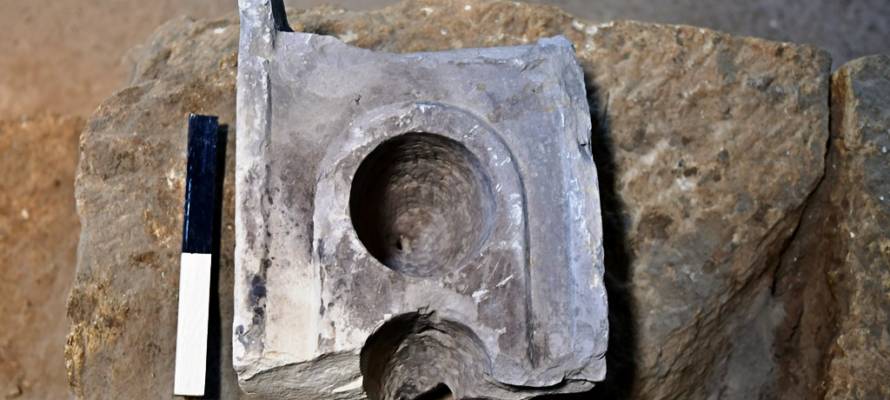Israeli archaeologists continue to find remarkable evidence of the Jewish people’s rich history in the Land of Israel.
By Aryeh Savir, TPS
Israeli archeologists recently exposed the top of a rare 2,000-year-old measuring table used for liquid items such as wine and olive oil, lending support to the idea that the area at which it was found was a major town square along Pilgrimage Road in the Old City of Jerusalem.
In addition to the measuring table, tens of stone measurement weights were also discovered in the same vicinity, indicating that the location was the main city square and market, en route to the Temple during the Second Temple Period, in what was historically known as Jerusalem’s lower city.
The Pilgrimage Road was the route on which Jewish worshipers ascended to the Temple during three holidays throughout the year.
It appears that the market served as the focal point of trade and commerce, and researchers have suggested that this area housed the offices of the “Agoranomos,” the Roman officer in charge of supervising measurements and weights in Jerusalem.
Professor Ronny Reich, who is researching the discovery, described the liquid measuring table, also known as a “standard of volumes” as a slab with “two deep cavities, each with a drain at its bottom.”
The drain at the bottom could be plugged with a finger, filled with a liquid of some type, and once the finger was removed, the liquid could be drained into a container, therefore determining the volume of the container, using the measurement table as a uniform guideline, he said.
This way, traders could calibrate their measuring instruments using a uniform standard.
Reich noted that “this is a rare find. Other stone artifacts were very popular in Jerusalem during the Second Temple, however, so far, excavations in Jerusalem have only uncovered two similar tables that were used for measuring volume – one during the 1970s in the Jewish Quarter excavations, and another in the Shu’afat excavations, in Northern Jerusalem.”
Archaeologist Ari Levi of the Israel Antiquities Authority (IAA) and one of the directors of the excavations of the Pilgrimage Road, said that the flat, round-shaped stone scale-weights found at the site “are of the type which was typically used in Jerusalem. The fact that there were city-specific weights at the site indicates the unique features of the economy and trade in Jerusalem during the Second Temple period, possibly due to the influence of the Temple itself.”
A large, open paved area dating back some 2,000 years, along the street leading up to the Second Temple has led IAA researchers Nahshon Szanton, Moran Hagbi, and Meidad Shor to suggest that this area served as the main square of the lower city where trade took place.
Levi said that the standard table and the stone weights support the theory that this was the site of “vast trade activity,” perhaps indicating the existence of a market.
Send 'Warm Winter' Care Packages to Israeli Soldiers - They are Cold!
We are honored to thank the young men and women of the IDF who risk their lives every day to defend the citizens of Israel.
Join us in sending winter care packages and personal notes of support to Israeli soldiers who are out in the cold all day.
Warm up a soldier's heart with essential winter wear including fleece jackets. Keep an entire unit warm by ordering 10 packages... The soldiers truly appreciate your love and concern!

